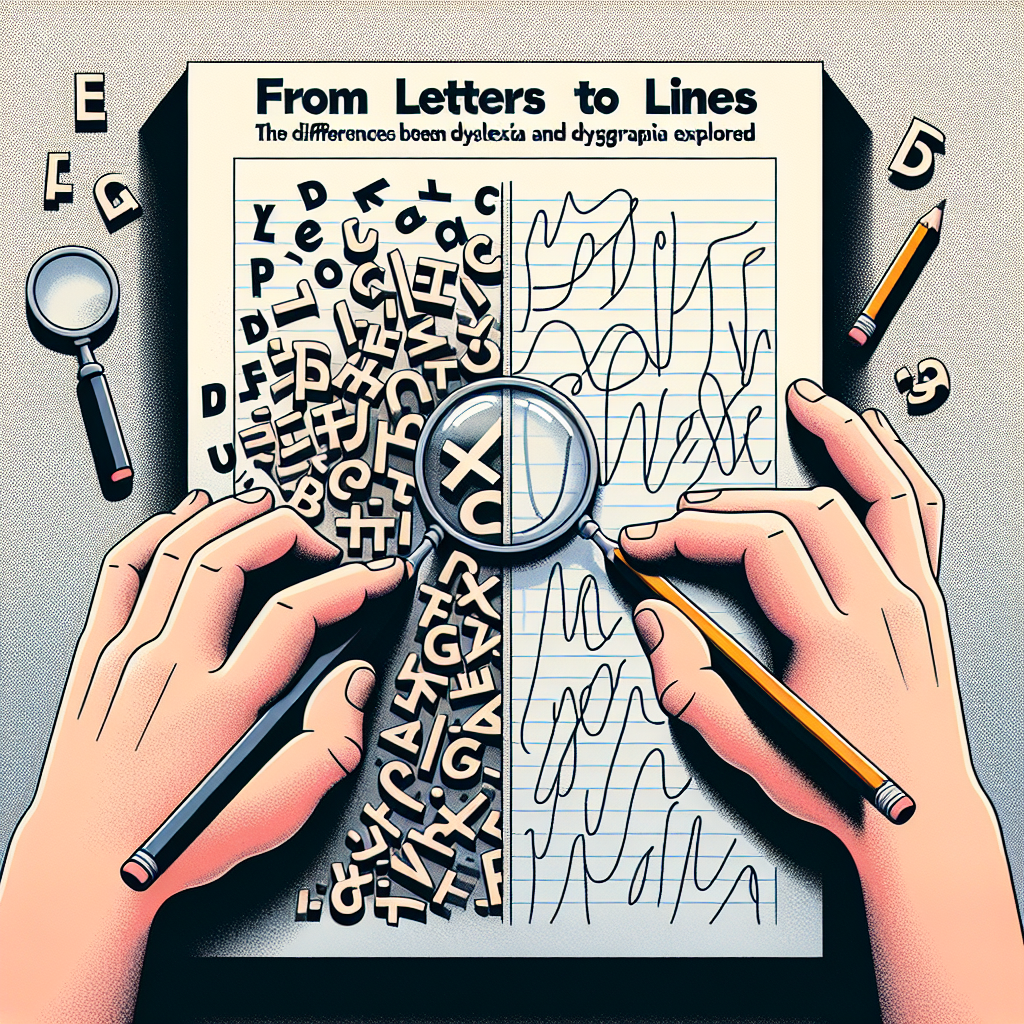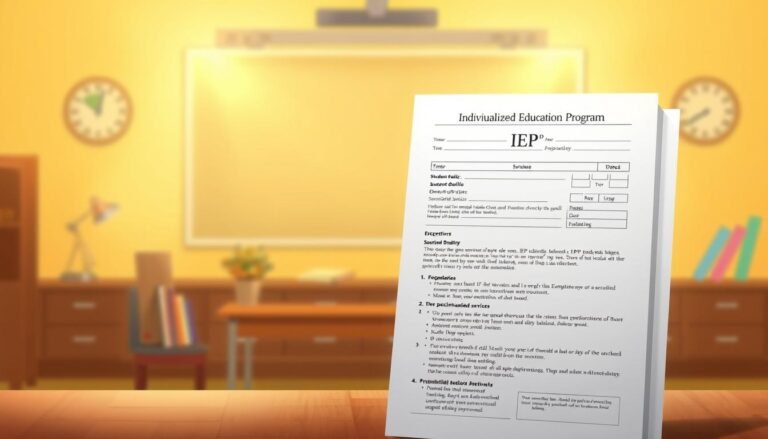
From Letters to Lines: The Essential Differences Between Dyslexia and Dysgraphia Explored
Introduction
Imagine sitting in a classroom, your peers darting pencils across clean sheets of paper while your own words feel jumbled and distant. For many students and even adults, this experience is a daily struggle—a struggle often rooted in distinct yet commonly confused learning differences: dyslexia and dysgraphia. Understanding these differences is not just essential for educators and parents; it’s vital for anyone who interacts with individuals facing these challenges.
In this extensive exploration, "From Letters to Lines: The Essential Differences Between Dyslexia and Dysgraphia Explored," we will dive deep into what distinguishes these two conditions, their symptoms, and coping mechanisms. We aim to transform confusion into clarity, offering insights that illuminate pathways for support, accommodation, and understanding.
Understanding Dyslexia: A Fundamental Perspective
Dyslexia is a specific learning disability that primarily impacts reading and language processing. Individuals with dyslexia might have difficulty with phonemic awareness, which is crucial for decoding words. Despite their often high intelligence, dyslexics may struggle with tasks that require reading fluency and comprehension.
Symptoms of Dyslexia
- Reading Difficulties: Slower reading speed, mispronouncing words, or omitting words entirely.
- Spelling Challenges: Poor spelling or difficulty learning to spell.
- Listening Comprehension: While they may understand spoken language, they may struggle to decode written content.
Case Study: Sarah’s Journey with Dyslexia
Sarah, a bright student in the fifth grade, loves storytelling but dreads reading out loud. Despite her rich vocabulary, she often misreads simple words. A tailored intervention plan, including audiobooks and reading assistance, transformed her learning experience, allowing Sarah to enjoy reading again. This case underscores the importance of early diagnosis and intervention for dyslexia.
Diving into Dysgraphia: The Written Word
On the other side, we have dysgraphia, a learning disability that affects writing. Individuals with dysgraphia struggle not just with writing but with organizing thoughts and expressing ideas in written form.
Symptoms of Dysgraphia
- Handwriting Issues: Messy handwriting, inconsistent letter sizes, or even difficulty taking notes.
- Spelling and Grammar Problems: Frequent misspellings and grammatical mistakes.
- Difficulty with Thought Organization: Challenges in organizing ideas on paper, leading to incomplete or incoherent writing.
Case Study: Mark’s Experience with Dysgraphia
Mark, a high school sophomore, faces challenges with writing assignments. His essays often receive lower grades because of poor handwriting and incoherent structure, even though he has great ideas. With the introduction of speech-to-text software and graphic organizers, Mark found a new means of expressing his thoughts. This highlights how technology can empower students with dysgraphia.
The Intersection and Divergence of Dyslexia and Dysgraphia
While dyslexia and dysgraphia can coexist, they stem from different cognitive processes. Dyslexia affects reading capabilities, while dysgraphia impacts writing skills. Understanding these differences can pave the way for specialized interventions.
Commonalities and Differences
| Feature | Dyslexia | Dysgraphia |
|---|---|---|
| Primary Issue | Reading and decoding | Writing and composition |
| Cognitive Process | Language processing | Fine motor skills and organization |
| Emotional Impact | Often leads to frustration with reading | May cause anxiety related to written tasks |
| Associated Challenges | Comprehension, spelling | Handwriting quality, clarity of thoughts |
The Importance of Early Detection
Recognizing the signs of dyslexia and dysgraphia early can lead to vital interventions. By employing assessment tools, educators and parents can provide necessary support tailored to each child’s needs.
Formative Assessment Techniques
- Screening Tools: Such as the DIBELS for dyslexia and the Test of Written Language for dysgraphia.
- Teacher Observations: Recognizing behavioral symptoms in a classroom setting can alert educators to potential issues.
- Parental Insights: Parents can offer invaluable observations based on home learning environments that may assist in diagnosis.
Effective Strategies for Supporting Dyslexia and Dysgraphia
Creating an inclusive environment for students dealing with these learning differences can significantly change their educational landscape. Here are valuable strategies educators and parents can employ:
For Dyslexia
- Multisensory Approaches: Utilizing programs that allow students to engage with letters and sounds physically can solidify learning.
- Audio Books & Digital Texts: Making literature accessible using technology enables students to engage while bypassing decoding struggles.
- Reading Programs: Structured programs like Orton-Gillingham focus on phonetic understanding.
For Dysgraphia
- Use of Technology: Implementing applications that assist with handwriting, such as tablets with styluses, can enhance fine motor skills.
- Graphic Organizers: Helping students structure their thoughts visually can reduce overwhelm and improve writing coherence.
- Extended Time for Writing Tasks: Allowing extra time can ease anxiety and foster a more productive writing environment.
Creating Supportive Educational Environments
Schools are the frontline in the battle against learning differences. Creating an adaptable educational model can facilitate success for both dyslexic and dysgraphic students. Teachers can benefit from training programs on diverse learning needs, and a supportive peer community can further foster these students’ growth.
Collaborative Approaches
Including cross-disciplinary teams—teachers, special educators, and parents—in discussions about student needs can create a well-rounded support system. Regular workshops can equip parents and educators with tools and knowledge, fostering a community built around understanding and accommodation.
Conclusion
In a world where communication is key, understanding the distinctions between dyslexia and dysgraphia is more essential than ever. "From Letters to Lines: The Essential Differences Between Dyslexia and Dysgraphia Explored" underscores a critical journey of acceptance and adaptation. With early intervention, tailored support, and technological advancements, individuals can navigate their unique paths toward success.
As we close this exploration, it’s vital to remember that each person’s experience with dyslexia or dysgraphia is unique. By fostering empathy, understanding, and resourcefulness, we can champion a culture of inclusivity—where both letters and lines pave the way for brighter futures.
FAQs Section
1. What is the main difference between dyslexia and dysgraphia?
Dyslexia primarily affects reading and decoding abilities, while dysgraphia impacts writing skills and the organization of thoughts in written form.
2. Can someone have both dyslexia and dysgraphia?
Yes, it’s possible for individuals to experience both dyslexia and dysgraphia, as they may stem from overlapping cognitive challenges.
3. How can I support my child who has dyslexia?
Implement multisensory learning techniques, consider audiobooks, and provide a calm environment for reading and homework.
4. What tools can assist a child with dysgraphia?
Utilizing technology like speech-to-text software, graphic organizers, and typing instead of handwriting can significantly help.
5. Is it possible to outgrow dyslexia or dysgraphia?
While the symptoms may evolve, individuals will often continue to navigate their challenges. However, effective interventions can help manage symptoms and improve skills.
6. Are there specific resources available for teachers?
Yes, various online platforms and educational institutions offer resources and training programs focused on learning disabilities, including dyslexia and dysgraphia.
By investigating "From Letters to Lines: The Essential Differences Between Dyslexia and Dysgraphia Explored," we open doors to understanding and meaningful support for those navigating these challenges, ultimately leading them to achieve their personal best.
















